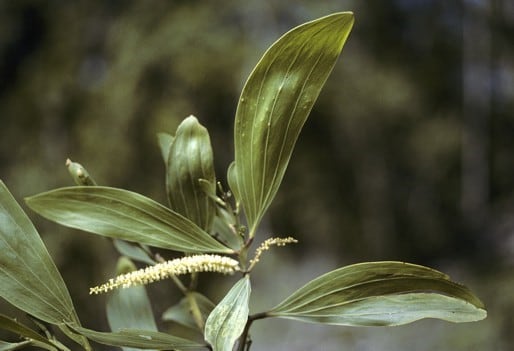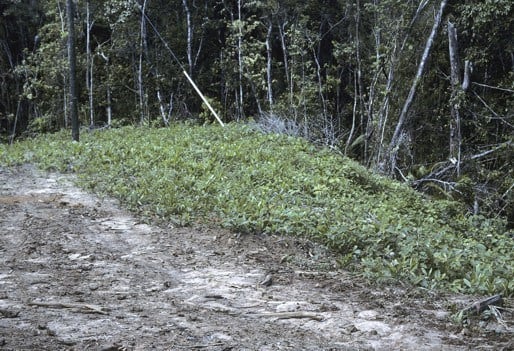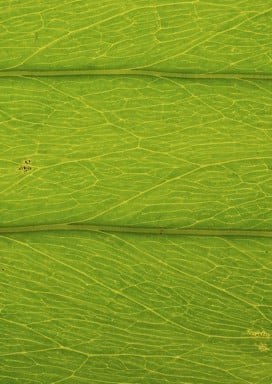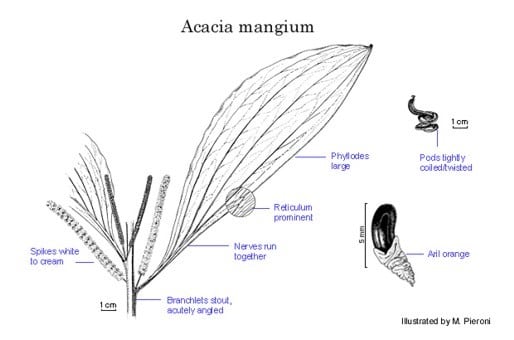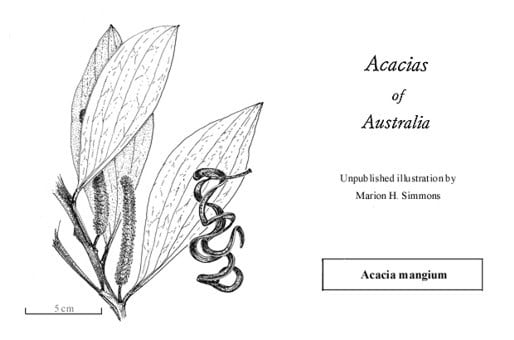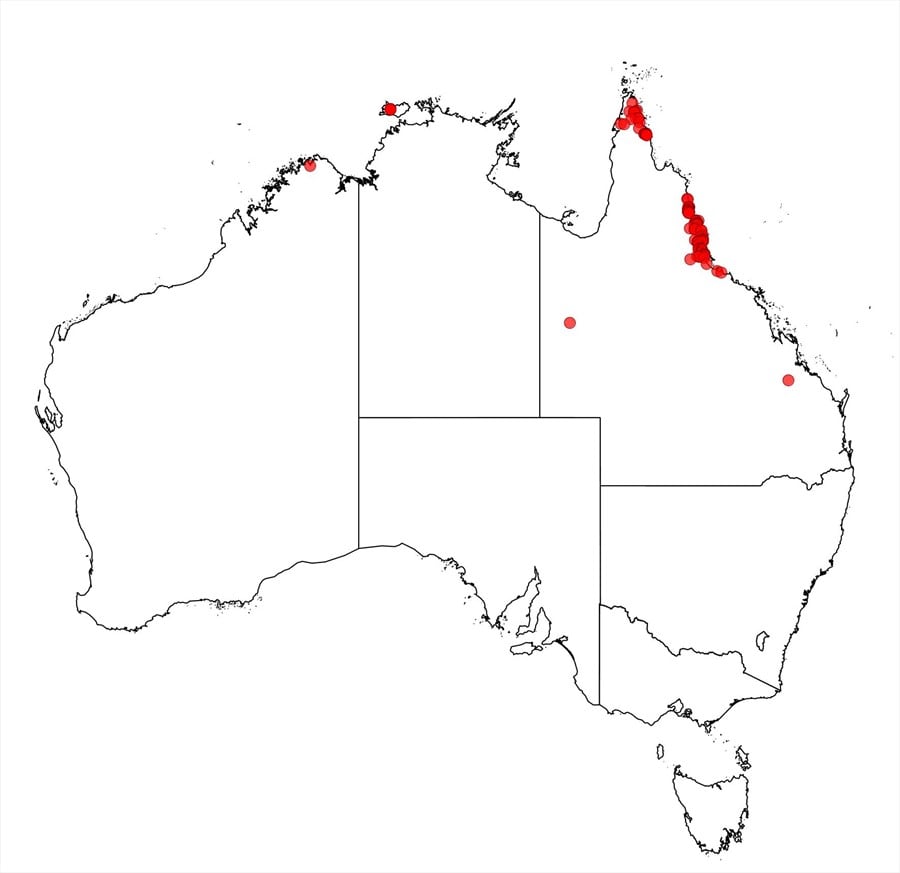Acacia mangium Willd.
WATTLE
Acacias of Australia
Common Name
Mangium, Hickory Wattle, Black Wattle
Family
Fabaceae
Distribution
Occurs in tropical Qld, in coastal areas N of 19ºS. Also recorded from southern Moluccas, Aroe Is. and southern New Guinea, fide L.Pedley, Contrib. Queensland Herb. 18: 14 (1975). Cultivated on Melville Is. N.T., where it has become weedy in places. Extensively cultivated in SE Asia (see below).
Description
Tree 7–30 m high, with branches spreading from near ground level or with bole to 4.5 m high. Bark corrugated or coarsely cracked, grey to dark brown. Branchlets stout, acutely angled, brown, fawn or green, glabrous, sometimes scurfy. Phyllodes obliquely narrowly elliptic to elliptic, normally 11–27 cm long, 23–95 mm wide, thinly coriaceous or papery, glabrous, with 3 or 4 (–5) main prominent nerves (confluent at base of phyllodes near lower margin); minor nerves strongly anastomosing to form a fine reticulum, with elongated interstices; gland 1, basal, to 4.5 mm above pulvinus. Spikes 5–12 cm long, loosely arranged, white to cream-coloured. Flowers 5-merous; calyx 0.6–0.8 mm long, dissected to 1/5–1/4, pubescent; corolla 1.8–2 mm long, dissected to 1/2, with glabrous petals; ovary densely hairy. Pods linear, openly coiled and twisted or sometimes tightly spirally coiled, 3–5.5 mm wide, coriaceous to subwoody, glabrous. Seeds longitudinal, oblong-elliptic to slightly reniform, 3.5–5 mm long, black, minutely pitted; areole almost closed; aril bright orange.
Phenology
Flowers Mar., May and July.
Habitat
Grows on the edge of rainforests and on margins of mangrove communities.
Specimens
Qld: Cardwell, R.G.Coveny 6599 & P.Hind (A, AD, BRI, CANB, NSW, PERTH, UC, US); at Daintree R. Ferry, I.V.Newman 527 (NSW); 3 km along road to Mt Molloy from Cook Hwy, I.R.Telford 9453 & G.Butler (CANB, NSW); c. 16 km N of Ingham, Bruce Hwy, P.G.Wilson & C.F.Puttock (BRI, MEL, NSW, QRS, UNSW13332).
Notes
Acacia mangium is widely-planted as an exotic. In SE Asia it is a major plantation species where it is grown for pulp and paper production and for saw logs. Commercial use is also made of A. auriculiformis × mangium hybrids by this industry. Further details of ecology, utilisation, etc. of A. mangium are given in J.C.Doran & J.W.Turnbull (eds), Australian Trees & Shrubs: Species for Land Rehabilitation & Farm Planting in the Tropics 178–181 (1997).
Presumed hybrids involving this species and A. polystachya as parents have been collected in Qld (e.g. Crystal Ck, c. 15 km N of Rollingstone, J.Moriarty 1108, PERTH).
This species has been confused with A. holosericea from which it can be distinguished by the nerves of the phyllodes and its more arborescent habit.
FOA Reference
Data derived from Flora of Australia Volumes 11A (2001), 11B (2001) and 12 (1998), products of ABRS, ©Commonwealth of Australia
Author
Minor edits by B.R.Maslin & J.Rogers
Dr M.D.Tindale and Dr P.G.Kodela with the assistance of M.Bedward, S.J.Davies, C.Herscovitch, D.A.Keith and/or D.A.Morrison
This identification key and fact sheets are available as a mobile application:
URL: https://apps.lucidcentral.org/wattle/
© Copyright 2018. All rights reserved.
